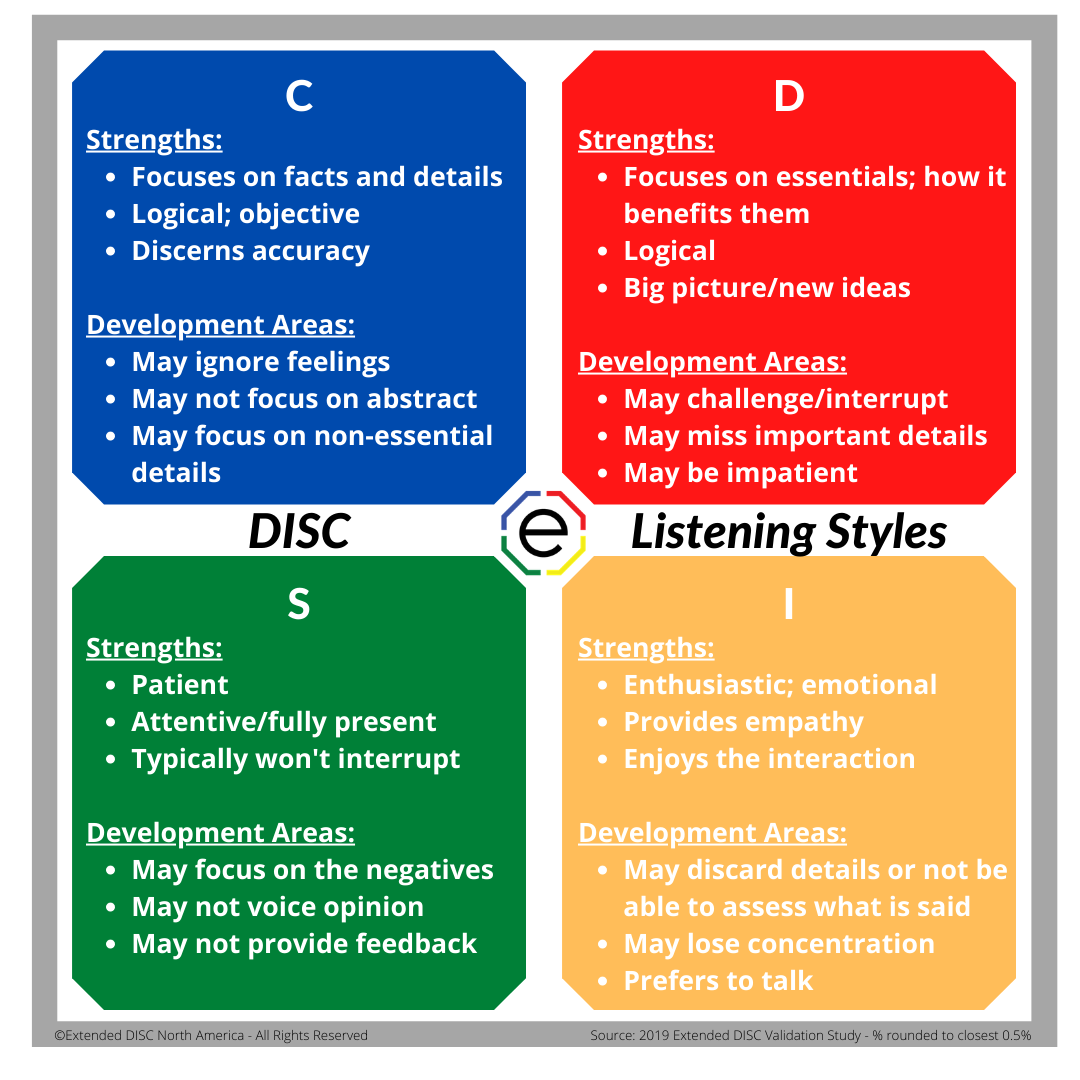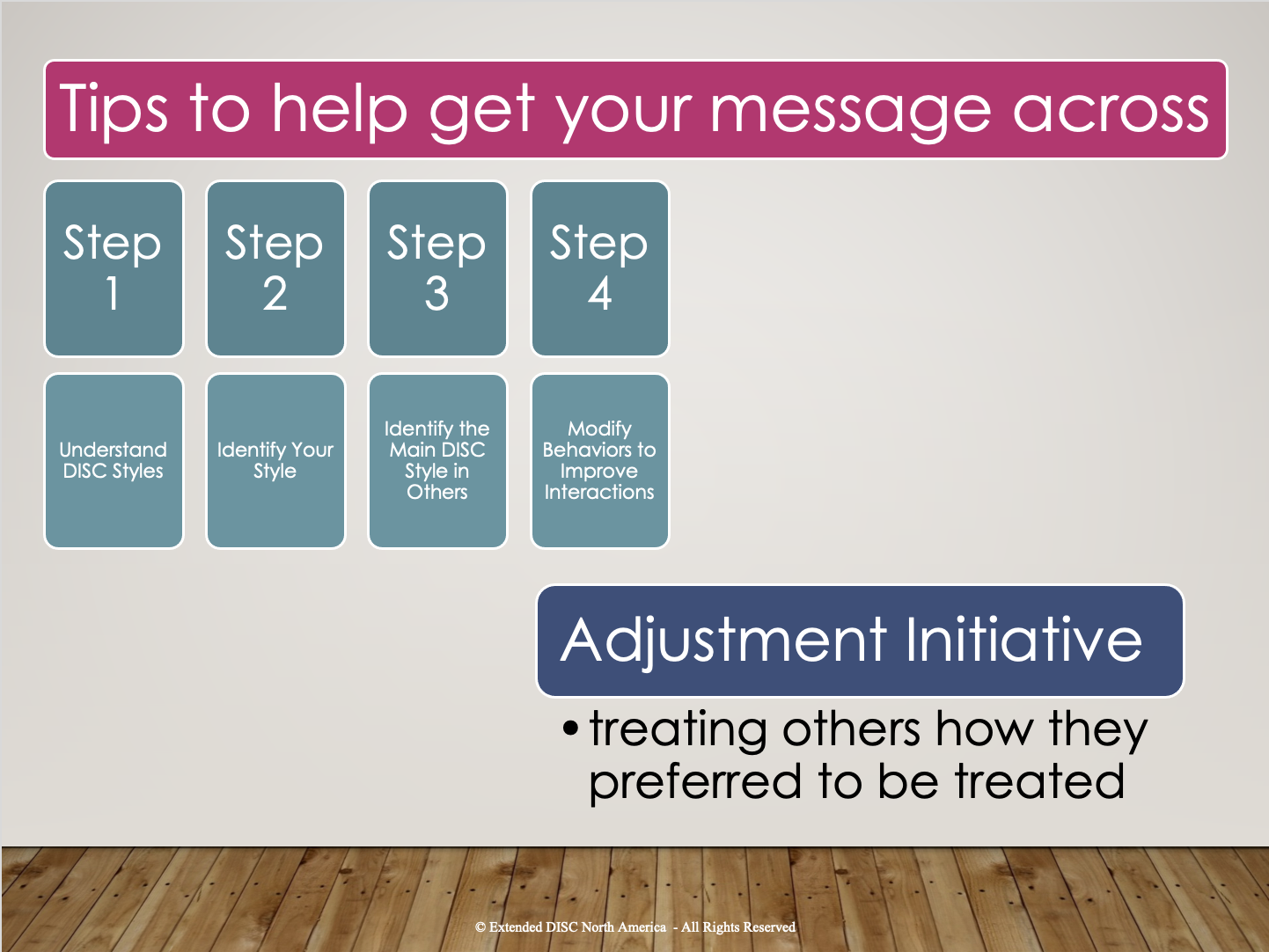Have you ever been frustrated because people don’t listen to what you’re saying? We’ve all been there!
Do you sometimes feel ignored, feel the need to repeat yourself, or feel misunderstood? How about those emails and conversations that go nowhere fast? You’re rolling your eyes and thinking, “why don’t they just listen to what I’m telling them?”
Not only is it frustrating, but miscommunication causes misunderstanding, conflict, errors, and loss of productivity. Wouldn’t it be so much easier if people heard and understood what you were telling them the first time? It would be easier; however, others may not listen the same way you do. What motivates you to listen is not the same for others; in fact, sometimes it can be demotivating for them to listen to you.
DISC helps improve interactions by first helping us understand how people listen differently. Let’s start by exploring how styles prefer to listen.
How DISC styles listen

Your D-styles prefer to speak over listen; enabling them to control the interaction. They want to know, “what’s in it for me?” and “what’s the takeaway?” Try being more concise and action-oriented. They will be more engaged if you focus on the essentials; think bullet points. Present the end goal and new ideas. Show how they can win and don’t get caught up in the chit chat.
Your I-styles also prefer to speak over listen, but they have a natural joy of talking. Let them speak…for a while at least. Be enthusiastic and enjoy the interaction. Avoid too many facts and details. Keep it brief and focus on the positive. Give them chances to interject whenever feasible.
Your S-styles are often your best audience because they prefer to listen. These attentive listeners want to hear your viewpoints. However, they may not express opinions or provide you with immediate feedback. Remind yourself to slow it down and build rapport. Stop periodically and check for questions and feedback.
Your C-styles prefer to listen to facts and details; even more so when they are interested in the topic. C-styles tend to lose motivation when the conversation focuses on chit chat and abstract topics. Focus less on feelings and more on data. Proceed carefully and logically. Be prepared to answer their questions with supportive information.
Getting your message across
 You naturally convey messages based on your own communication preferences. Well, that only works if the other person is like you. The good news is you already know how to communicate well, but DISC is a reinforcement tool reminding you to do it consistently.
You naturally convey messages based on your own communication preferences. Well, that only works if the other person is like you. The good news is you already know how to communicate well, but DISC is a reinforcement tool reminding you to do it consistently.
DISC starts by identifying your listening style. It also helps you build awareness of how you listen versus how other styles prefer to listen. Remember, there are no better or worse styles; they’re only different.
Now, you have supportive information on how to adjust your style so other styles will hear your message the first time. Can you get your message across faster if you spoke softer and at a slower pace? What if you know the other person is an I-stye, could you speed it up, avoid too much details, and build in time to chat?
Remind yourself of the Adjustment Initiative; treat others the way they want to be treat. It is more effective.Knowing what drives people to listen; allows you to better recognize options for interacting with them. You will be more successful in getting your message across when the other person is engaged in the interaction.
So the next time people don’t seem to be listening to you, give it a try. The best possible outcome is they end up listening to you!
